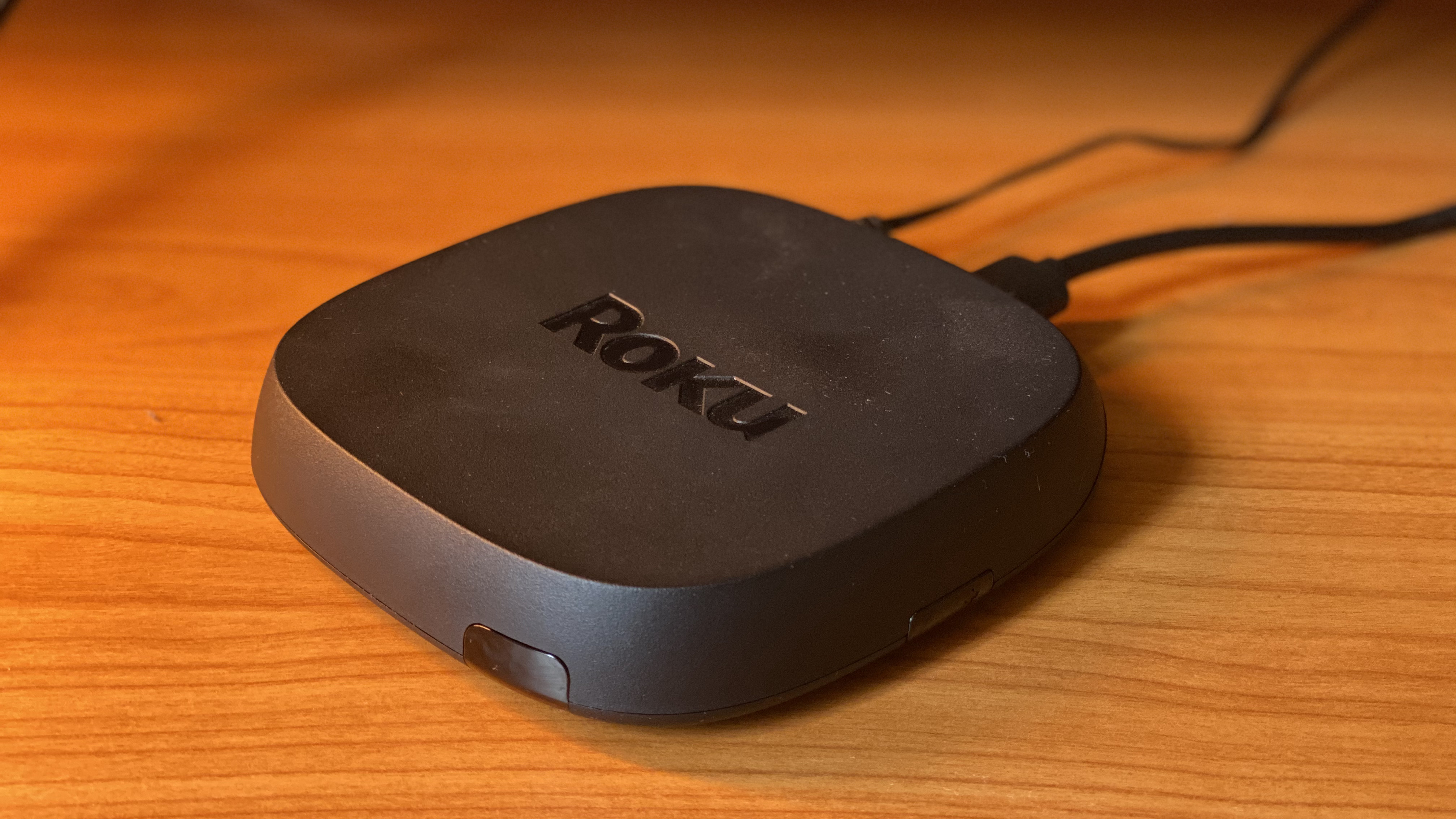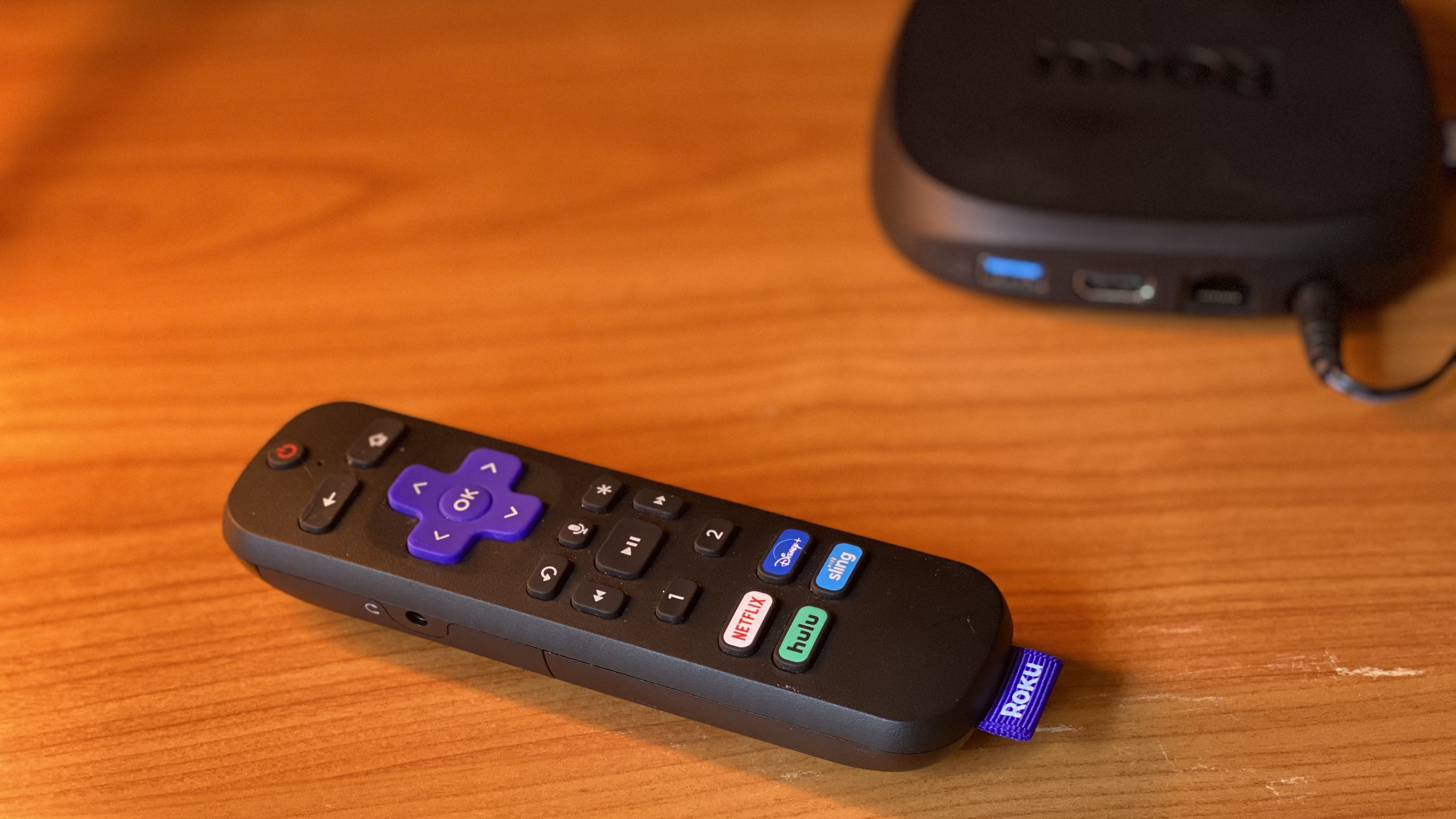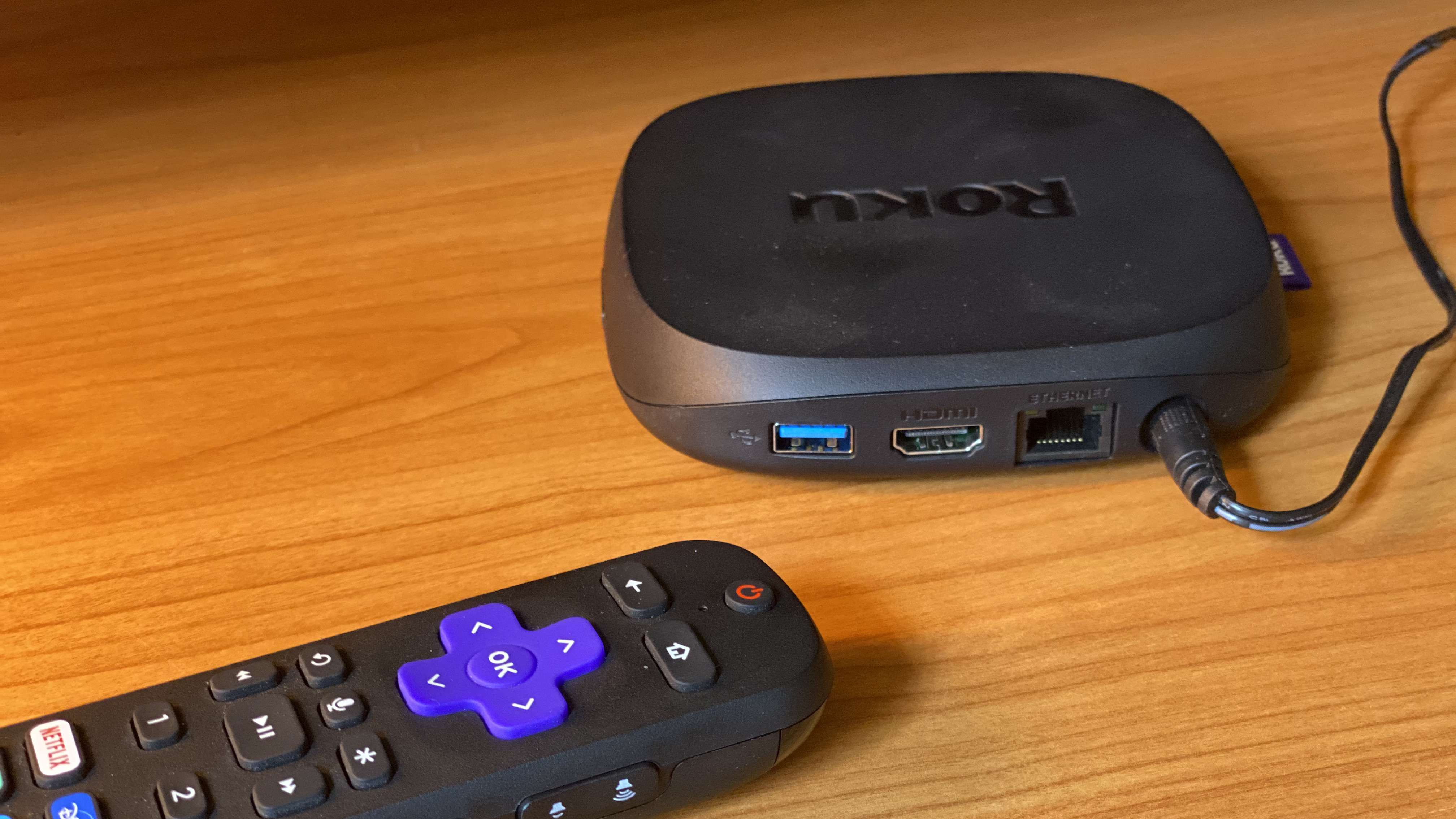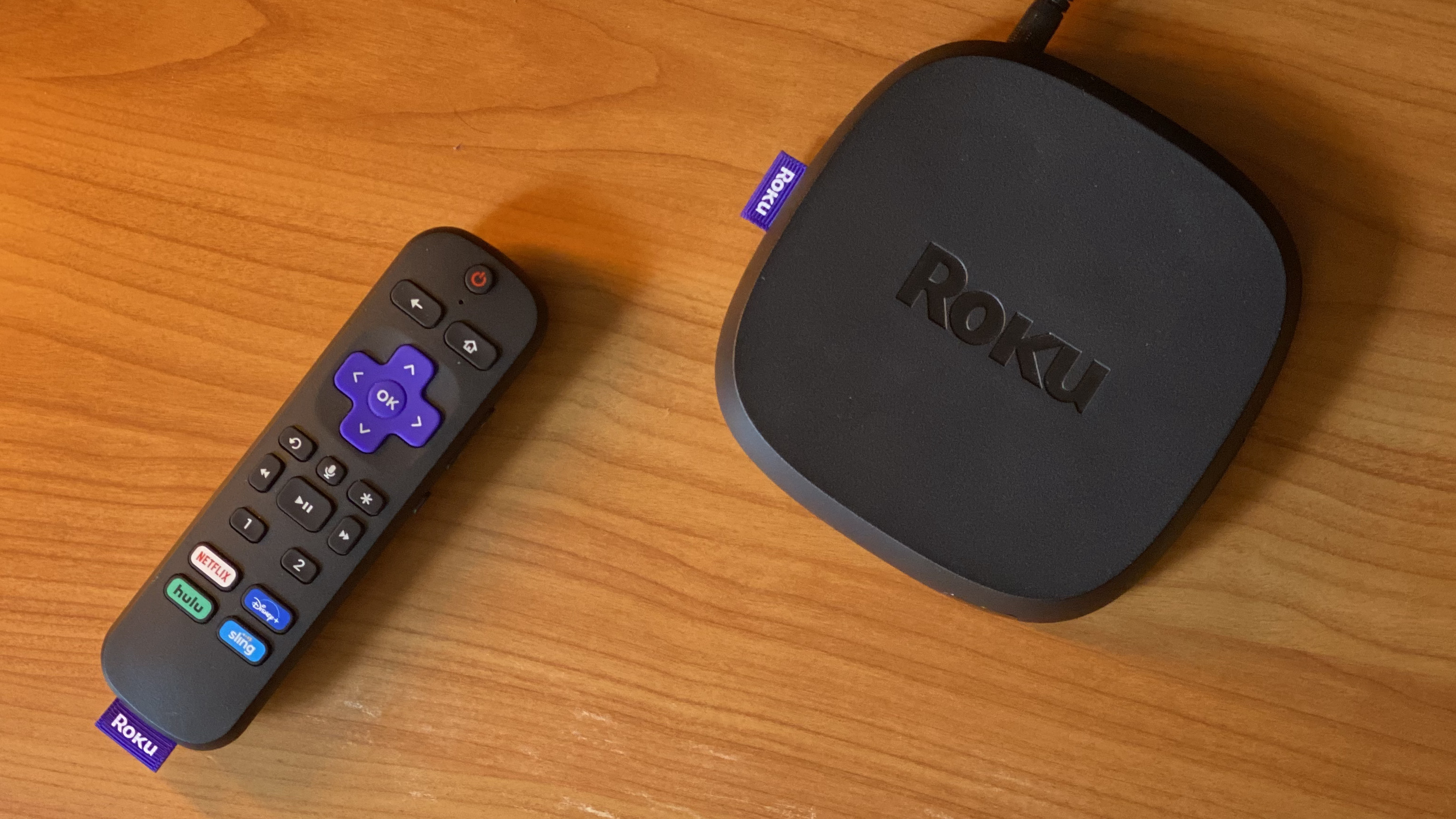One-minute review
In the war of the streaming devices, the Roku Ultra is an old veteran. It has taken on the likes of Apple, Amazon and Google with a flagship-level specs and a competitive price over the last five years (the original Ultra launched in 2016), and has since seen a number of software and hardware improvements while retaining that 'Ultra' namesake.
Roku Ultra 2020 is the latest version, and it includes new perks like Dolby Vision and Dolby Atmos streaming to the system – two major previously missing components for Hi-Fi enthusiasts like ourselves – while the latest software patch brings support for HBO Max, fully rounding out Roku’s robust collection of streaming apps.
Inside, the newly refreshed streaming set-top box has an improved Wi-Fi antenna for longer reach, and there’s been some improvements to the overall responsiveness of the player – though, it doesn’t feel miles ahead of last year’s Ultra model.
Returning on this year’s Roku Ultra are the voice remote with a built-in headphone jack for private listening and the remote finder button (two of Roku’s best, most unique features) as well as the back ethernet port that will help folks who keep the Roku right next to their router.
Best of all, perhaps, is the continuation of the Roku Ultra’s incredibly competitive sticker price of $99.99 – about $30 less than the similarly spec’d Amazon Fire TV Cube and nearly half the price of the $179 Apple TV 4K, despite the overwhelming similarities. It's not the cheapest ticket to Dolby Vision streaming – that honor belongs to the new Chromecast with Google TV – but the Roku Ultra offers a lot more versatility and breath in the amount of streaming services available to it.
While all these new additions and returning features help make the Roku Ultra the best value for cord-cutters and cord-nevers looking for a 4K HDR streaming box with Dolby Vision and Dolby Atmos, it’s not the flashiest player on the market with its aging interface. Worse, we’ve noticed a few audio syncing issues while using HBO Max and other services, and it doesn’t offer as big of an upgrade in hardware as we’d like year-on-year.
Still, if you only have $100 set aside for a new streaming player, and you want it to have access to nearly every major streaming service plus new formats Dolby Atmos/Vision and one of the best universal search functions anywhere, the Roku Ultra is a phenomenal value.
Price and release date
The newest Roku Ultra came out at the tail-end of 2020 for $99.99 (around £70, AU$130 – though it’s not available in either territory), and will be available throughout 2021 in the US until Roku inevitably announces its new slate of streaming devices toward the end of year.
So where does the Roku Ultra sit in Roku’s streaming player lineup? Well, currently it’s the top player, both in terms of performance and price – unless, of course, you count the new Roku Streambar and Roku Smart Soundbar that build a Roku streaming device into a two-channel soundbar.
Underneath the Roku Ultra are the Roku Premiere, Roku Streaming Stick+ and Roku Express, as well as the seasonal Roku SE that makes its debut each year around Black Friday and Cyber Monday. So what's the difference between them all? The Premiere and Streaming Stick+ both do 4K HDR streaming – but don’t use Dolby Vision or Dolby Atmos – while the Express and SE only stream in HD.

Design
Design-wise, the Roku Ultra is a flat streaming video box that inconspicuously blends in with all your other AV equipment. At just a few inches wide by a few inches deep it’s obviously much smaller than, say, a Blu-ray player, and closer in size to the actual Blu-ray itself.
The outside of the box doesn’t have much going on. There’s an IR receiver on the front, a remote finder on the right side, plus the distinctive purple Roku tag on the left side. Otherwise, there’s nothing else there that calls attention to itself.
Spin it around to the back and you’ll find an HDCP 2.2 HDMI 2.0a port for video out – plus an ethernet port that we’ve already talked about – as well the power connector. This model doesn’t have the MicroSD card slot that can be used to store additional channels, however it does a USB port located on the back of the player that could be used as a connector for a USB drive like last year’s model. Losing the MicroSD slot is a bummer, but it's not exactly a deal-breaker.
The Roku Ultra specs include a quad-core processor and 802.11ac dual-band wireless antenna that, according to Roku, helps expand the range of the player by twice the distance. What sets the Ultra apart from other models in Roku’s lineup is that it comes with the voice remote with two programmable buttons that can be set for any button sequence.
Probably the coolest feature about the remote is that it has a 3.5mm auxiliary jack on the side of it that allows you to connect a pair of headphones for private listening. This is a hugely handy feature when the family goes to bed and you don’t want to wake them up, and it’s something that very few other streaming devices have.
In previous years, we had real concerns about how hot the player got while it was in use, but we haven't had any issues with that with this year's model. That said, we wouldn't place it on top of a game console like the PS5 or Xbox Series X for fear that the two combined would produce too much heat, but otherwise it should be fine.
Lastly, thanks to the use of HDMI-CEC, the remote can be used to turn on and off your TV, and control the volume. This is a nice touch, especially for cord-cutters who can then safely put away the TV remote and will even work with an external soundbar if you connect it via ARC or eARC to your TV.

Features
If there’s a more fully featured app store on a set-top box, we’d like to see it. Roku may not have literally everything, but this is as close as it’s going to get. Roku boasts more than 4,500 channels ranging from the streaming mainstays, like Netflix, HBO and Vudu, to the obscure – there's actually a station called "The Fireworks Channel" – so finding something to watch is rarely a problem.
For US viewers, all the big names are here: Netflix, Amazon, Hulu, Disney Plus, Apple TV, Peacock, YouTube, Crunchyroll, Plex and Pandora and Spotify. You can rent and buy individual movies and TV through Vudu and Fandango, the latter of which is the de facto rental service on the streamer.
The newest addition to Roku’s channel lineup is HBO Max, which finally made its appearance after a lengthy contract negotiation process. To download the app, go into the 'Featured' section of the channel store or search for 'HBO Max' through the Roku voice remote or Roku app on your mobile device. Once it’s downloaded, follow the on-screen directions to log in through your provider or enter your username and password.
Cord cutters who live in the US will also have access to Sling TV and YouTube TV, plus The Roku Channel, which offers its own selection of TV shows and movies. If you ever struggle to find something to watch, there’s the Featured Free section of the homepage that shows you what's available for free on the different services. These are invaluable resources for cord-cutters, and a great alternative to channel surfing for folks who still have a box.
What’s missing here, however, is a competent, built-in smart assistant like Alexa or Google Assistant. What Roku does offer is its new Roku Assistant, which can understand and answer basic queries like ‘what time is it?’ or ‘what’s today’s date?’ but can’t interact with your smart home or any of your smart gadgets in a meaningful way. Both the Amazon Fire TV Cube and Nvidia Shield come with Alexa and Google Assistant, respectively, so for both to be missing here on Roku’s high-end player feels like another misstep.
Where we’re willing to give Roku some credit, though, is for its integration with Amazon and Google smart devices. While Roku can’t control either platform, both platforms can be used to control your Roku – which is handy if you don’t want to walk over and grab the remote. (Though, admittedly, we often just opt to use Roku’s mobile app in that case.)
In terms of additional codecs, the Roku Ultra supports H.264/AVC, H.265/HEVC, VP9 video codecs and AAC, MP3, WMA, FLAC, PCM, AC3/EAC3, DTS, ALAC audio codecs. That’s not an exhaustive list of everything out there, obviously, but the most popular codecs are all present and accounted for.
The Roku Ultra also supports screen casting – not a codec per se, but definitely a useful feature when you have a roomful of friends who all want to share their favorite YouTube clip – as well as HomeKit and AirPlay 2 support.

Performance
While you could save yourself some money by picking up the more affordable Roku Streaming Stick+ or Roku Premiere – both of which stream in 4K HDR – only the new Roku Ultra is capable of streaming in Dolby Vision and passing along Dolby Atmos audio... well, sometimes.
Support for Dolby Vision streaming on apps like Netflix requires you to have a 4K TV that supports Dolby Vision, obviously, but also has HDCP 2.2 with HDR10 at 60 frames per second as well. If you don’t have it, Netflix defaults to standard HDR10 instead of Dolby Vision… which defeats the whole purpose of getting a Roku Ultra.
If you have a capable TV, that’s not a problem, but as it stands only a few 4K TVs support Dolby Vision (all Samsung TVs do not, for example) and any ones made before 2017 might not be capable of HDR10 at 60 frames per second. Be sure to check before you plunk down.
That said, even if you are stuck with HDR10 instead of Dolby Vision, it’s not the worst picture in the world – it’s much better than 4K without HDR, and miles ahead of standard 1080p streaming. Watching 4K HDR video means getting more details in the picture with better contrast and better color saturation. It really brings an added layer of visual flair to nature documentaries like Our Planet on Netflix and some reach panache to movies like Ready Player One.
Of course, not everything is going to be available in 4K HDR, especially when you leave the confines of Netflix and Amazon Prime Video. Thankfully, though, even when shows and movies didn’t stream in 4K, they still looked fine. HD/SDR content looked slightly subdued in terms of color and contrast but still relatively crisp in terms of resolution.
Admittedly, the Roku Ultra doesn’t do much in the way of upscaling in the same way that an Apple TV or the Nvidia Shield TV do, but it doesn’t make content look any worse either. But that means if you’re looking for real high-end upscaling, you’ll have to look elsewhere.
The other issue we noticed, and it only popped up a few times, was that the Roku Ultra did introduce some audio glitches occasionally. We noticed it when we were streaming Mulan on Disney Plus and then again while watching Rick and Morty Season 4 on HBO Max on a separate TV. This is a problem some users have been complaining about for years on Roku’s forums, but until now we’ve never had a problem with it. Regardless, these problems are worth reporting for your awareness, if nothing else.
To end on a positive note, general browsing speed – like the time it takes to jump from one app to another, or to start a TV show or movie – was surprisingly speedy. We were able to get Netflix to start faster on the Roku Ultra than on our 2020 Vizio smart TV, which was a pleasant surprise, and we never once had the player stop to buffer. The last part will largely depend on your internet speeds and distance between the player and your wireless router, but in our testing conditions we never had a problem.
Should you buy the Roku Ultra (2020)?

Buy it if...
You want a Dolby Atmos/Dolby Vision-capable streaming box
There are a number of more affordable streaming boxes and sticks out there, but the Roku Ultra is one of the cheapest to come with Dolby Atmos/Vision 4K HDR streaming. Where speed and performance are concerned, it’s a very good value.
You want (nearly) every streaming service at your disposal
Probably the biggest reason to buy a Roku streaming box instead of an Amazon Fire TV Stick is because Roku simply has more streaming options. It has no horse in the streaming services race and no on-going feuds, and can therefore happily support all of them.
You’re looking for something that’s simple to use
We take a few potshots at Roku’s aging interface, but the reason that Roku refuses to change it is because they know that’s what customers have grown accustomed to. Once you learn Roku’s relatively simple user interface, you’ll be able to use it for years without ever having to worry about apps getting moved around on you.
Don't buy it if...
You want a flashy player or feature-rich interface
Roku isn’t flashy – that’s just not the company’s nature. The Roku interface is reliable and unchanging, which is great for people who hate learning something new. The downside is that, if you like the latest features, the Roku Ultra probably won’t have them for a while.
You’re looking for a super-smart streaming player
Being able to control the Roku Ultra with a smart assistant is neat, but it doesn’t beat having a smart assistant like Siri, Alexa or Google built right in. The latter group would allow you to control your smart devices throughout your home via voice commands and although not a deal-breaker for most, would’ve helped the Ultra compete with the Apple TV 4K and Fire TV Cube.
You have a 4K TV with HDCP 2.2 HDMI ports
Despite it being the number-one new feature on the Roku Ultra, not every TV you connect it to will be able to harness Dolby Vision streaming. In fact, even some Dolby Vision TVs won’t be able to use it if they don’t have HDCP 2.2-compliant HDMI ports. This issue will only impact a small fraction of potential buyers, but it’s worth watching out for all the same.
- Want to see all your options? Don't miss our guide to the best streaming devices
via Tech Trade
Comments
Post a Comment